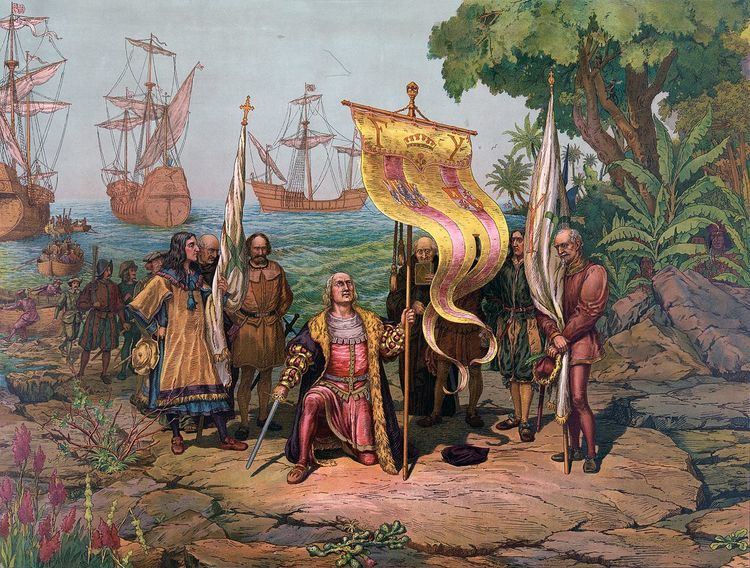 | ||
The 15th century was the century which spans the Julian years 1401 to 1500.
Contents
- Events
- Significant people
- Visual artists architects sculptors printmakers illustrators
- Literature
- Musicians and Composers
- Exploration
- Science invention and philosophy
- Inventions discoveries introductions
- References
In Europe, the 15th century is seen as the bridge between the Late Middle Ages, the Early Renaissance, and the Early modern period. Many technological, social and cultural developments of the 15th century can in retrospect be seen as heralding the "European miracle" of the following centuries. In religious history, the Roman Papacy was split in two parts in Europe for decades (the so-called Western Schism), until the Council of Constance. The division of the Catholic Church and the unrest associated with the Hussite movement would become factors in the rise of the Protestant Reformation in the following century.
Constantinople, the capital of the Byzantine Empire, falls to the emerging Ottoman Turks, marking the end of the tremendously influential Byzantine Empire and, for some historians, the end of the Middle Ages. The event forced Western Europeans to find a new trade route, adding further momentum to what was the beginning of the Age of Discovery, which would lead to the global mapping of the world. Explorations by the Spanish and Portuguese led to European sightings of the Americas (the New World) and the sea passage along Cape of Good Hope to India, in the last decade of the century. These expeditions ushered in the era of the Portuguese and Spanish colonial empires.
The fall of Constantinople led to the migration of Greek scholars and texts to Italy, while Johannes Gutenberg's invention of the mechanical movable type began the Printing Press. These two events played key roles in the development of the Renaissance.
The Spanish Reconquista leads to the final fall of the Emirate of Granada by the end of the century.
The Hundred Years' War end with a decisive French victory over the English in the Battle of Castillon. Financial troubles in England following the conflict results in the Wars of the Roses, a series of dynastic wars for the throne of England. The conflicts ends with the defeat of Richard III by Henry VII at the Battle of Bosworth Field, establishing the Tudor dynasty in the later part of the century.
In Asia, under the rule of the Yongle Emperor, who built the Forbidden City and commanded Zheng He to explore the world overseas, the Ming Dynasty's territory reached its pinnacle. Tamerlane established a major empire in the Middle East and Central Asia, in order to revive the Mongol Empire.
In Africa, the spread of Islam leads to the destruction of the Christian kingdoms of Nubia, by the end of the century leaving only Alodia (which was to collapse in 1504). The formerly vast Mali Empire teeters on the brink of collapse, under pressure from the rising Songhai Empire.
In the Americas, both the Inca Empire and the Aztec Empire reach the peak of their influence.
Events
1400s
1410s
1420s
1430s
1440s
1450s
1460s
1470s
1480s
1490s-1500
Significant people
Visual artists, architects, sculptors, printmakers, illustrators
See links above for Italian Renaissance painting and Renaissance sculpture.
Literature
Musicians and Composers
Exploration
Science, invention and philosophy
Inventions, discoveries, introductions
List of 15th century inventions
______________________________________________________________________________________________________________________
